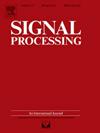基于纹理和几何特征融合的敦煌壁画绘制网络
IF 3.4
2区 工程技术
Q2 ENGINEERING, ELECTRICAL & ELECTRONIC
引用次数: 0
摘要
近年来,基于深度学习的图像绘制方法已经成为一个热门的研究领域。然而,将这些方法应用到壁画中存在一些挑战。首先,壁画图像往往包含复杂的纹理和丰富的细节。传统的修复方法难以有效地保留纹理和细节信息,无法确保修复区域与原始壁画之间的一致性。其次,壁画的缺失区域通常包含复杂的几何结构和艺术风格,这需要壁画绘制算法理解图像的全局语义并准确捕获局部细节。提出了一种敦煌壁画彩绘纹理与几何特征融合网络,该网络由两个子网络组成:初级彩绘网络(PIN)和细化增强网络(REN)。PIN通过结合壁画线条来提取几何特征。它利用mamba增强的编码模块和编码器中的门控卷积有效地捕获图像纹理特征,从而提高纹理细节的清晰度。然后,动态多尺度语义融合模块(DMSFM)结合纹理和几何特征的全局和局部信息,完成对受损壁画的初始修复。REN专门通过恢复复杂的纹理,精细的边缘和局部结构来绘制图像细节。从敦煌壁画数据集中随机选择叙事、佛教和沉箱壁画来测试所提出的网络。对比实验结果表明,与现有的常用方法相比,该方法取得了更好的壁画绘制效果。本文章由计算机程序翻译,如有差异,请以英文原文为准。
Texture and geometric feature-fusion-based network for Dunhuang mural inpainting
In recent years, deep-learning-based image inpainting methods have emerged as a popular research area. However, the application of such methods to mural inpainting presents several challenges. First, mural images often contain complex textures and rich details. Traditional inpainting methods struggle to preserve texture and detail information effectively and cannot ensure consistency between restored areas and the original mural. Second, the missing regions of murals often contain complex geometric structures and artistic styles, requiring mural inpainting algorithms to understand an image’s global semantics and accurately capture local details. This paper proposes a texture and geometric feature fusion network for Dunhuang mural inpainting consisting of two subnetworks: a Primary Inpainting Network (PIN) and a Refinement Enhancement Network (REN). The PIN extracts geometric features by incorporating fresco line drawings. It utilizes a Mamba-enhanced encoding module and gated convolution in its encoder to capture image texture features effectively, thereby enhancing the clarity of texture details. Then, the Dynamic Multi-scale Semantic Fusion Module (DMSFM) combines global and local information from texture and geometric features, completing the initial inpainting of a damaged mural. The REN specializes in inpainting image details by recovering complex textures, fine edges, and local structures. Randomly selected Narrative, Buddhist, and Caisson murals from a Dunhuang mural painting dataset were used to test the proposed network. Comparative experimental results demonstrate that the proposed method achieves superior mural inpainting outcomes compared with popular existing methods.
求助全文
通过发布文献求助,成功后即可免费获取论文全文。
去求助
来源期刊

Signal Processing
工程技术-工程:电子与电气
CiteScore
9.20
自引率
9.10%
发文量
309
审稿时长
41 days
期刊介绍:
Signal Processing incorporates all aspects of the theory and practice of signal processing. It features original research work, tutorial and review articles, and accounts of practical developments. It is intended for a rapid dissemination of knowledge and experience to engineers and scientists working in the research, development or practical application of signal processing.
Subject areas covered by the journal include: Signal Theory; Stochastic Processes; Detection and Estimation; Spectral Analysis; Filtering; Signal Processing Systems; Software Developments; Image Processing; Pattern Recognition; Optical Signal Processing; Digital Signal Processing; Multi-dimensional Signal Processing; Communication Signal Processing; Biomedical Signal Processing; Geophysical and Astrophysical Signal Processing; Earth Resources Signal Processing; Acoustic and Vibration Signal Processing; Data Processing; Remote Sensing; Signal Processing Technology; Radar Signal Processing; Sonar Signal Processing; Industrial Applications; New Applications.
 求助内容:
求助内容: 应助结果提醒方式:
应助结果提醒方式:


